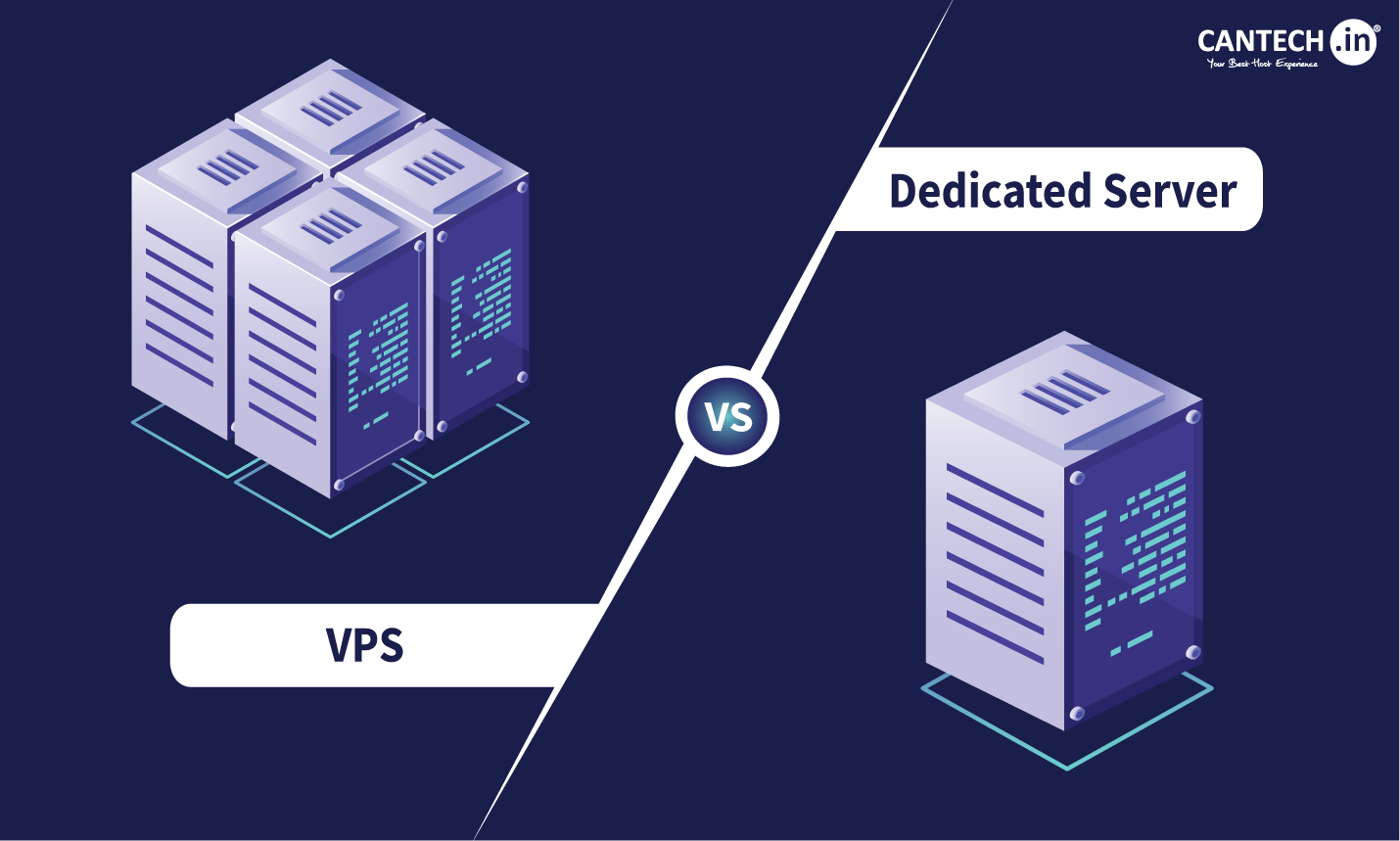Saudi Arabia’s economy is evolving rapidly. Companies of all sizes—large enterprises, SMEs, and startups—are seeking robust solutions to streamline operations, optimize resources, and stay competitive in the kingdom’s thriving business environment. Enterprise Resource Planning (ERP) software stands as a crucial catalyst for organizational success, enabling seamless integration of core processes including finance, human resources, supply chain, and more.
Below, you’ll find an in-depth exploration of ERP software in Saudi Arabia, covering the biggest players, local compliance requirements, pricing structures, implementation strategies, real customer reviews, frequently asked questions, and potential drawbacks of each service. By the end of this guide, you’ll be well-equipped to make an informed decision about which ERP solution can help transform and empower your business for growth.
Why ERP Software Matters in Saudi Arabia
Saudi Arabia’s economic transformation is underpinned by various government-led initiatives such as Vision 2030, which aims to diversify the economy away from oil dependency. As businesses expand and regulations become more sophisticated, ERP solutions serve as centralized platforms for managing complex business processes.
- Streamlined Operations: With multiple departments—from procurement to sales—being consolidated, managers can gain real-time visibility into critical business metrics.
- Regulatory Compliance: Saudi organizations must comply with ZATCA e-invoicing mandates, VAT regulations, and other national directives. ERP systems ensure that you stay up-to-date on changing policies.
- Global Competitiveness: As Saudi companies expand regionally and internationally, scalable ERP platforms enable growth without losing operational control.
- Data-Driven Decision-Making: Real-time analytics help executives and business owners make informed decisions faster, leading to better financial performance.
“Empowering your operations with the right ERP is no longer a luxury; it’s a necessity,” says Tamer Badr, the owner of Singleclic, a leading digital solutions provider based in Riyadh. “Our clients consistently see a reduction in manual tasks, improved compliance, and better decision-making across all departments.”
Market Overview of ERP Software in Saudi Arabia
Saudi Arabia’s ERP market is dominated by global names such as SAP, Oracle, and Microsoft Dynamics 365, as well as local and regional providers. As of 2023, the demand for localized solutions—especially those tailored to Arabic-language interfaces and specific regulatory frameworks—has surged.
Key Drivers in the Saudi ERP market:
- The government’s push for e-invoicing and VAT compliance.
- The rapid digitalization of traditional sectors like manufacturing, retail, and oil & gas.
- Growing SMEs and startups that need cost-effective, cloud-based ERP solutions.
- A skilled workforce more attuned to technology adoption and innovation.
Choosing the right ERP depends on various factors: company size, industry, budget, functional requirements, and long-term growth plans. Below is a detailed breakdown of the most popular ERP solutions in the country.
Major ERP Solutions in Saudi Arabia
SAP
SAP is one of the world’s most established ERP providers, offering a comprehensive suite of solutions such as SAP S/4HANA (on-premise and cloud versions) and SAP Business One (often used by smaller businesses).
Key Features
- Real-time analytics through the HANA in-memory database.
- Localization for Middle Eastern regions, including support for right-to-left languages.
- Industry-specific modules (e.g., oil and gas, manufacturing, retail).
Potential Drawbacks
- High Implementation Cost: SAP can be expensive for SMEs, with initial setup and ongoing maintenance fees that might strain budgets.
- Complex Deployment: It often requires specialized consultants, leading to longer implementation timelines.
Oracle ERP Cloud
Oracle’s cloud-based ERP is recognized for its robust financial modules, advanced business intelligence capabilities, and scalability. It caters to enterprises that need high performance and intricate compliance management.
Key Features
- Comprehensive financial management tools, including revenue recognition and asset lifecycle tracking.
- Advanced analytics via Oracle Analytics Cloud.
- Modular architecture, allowing for phased implementation.
Potential Drawbacks
- Customization Complexity: Oracle’s extensive features can be overwhelming. Customizing the system might require specific technical skills.
- Subscription Costs: Cloud-based subscription fees can accumulate, especially for larger deployments needing multiple modules.
Microsoft Dynamics 365
Microsoft Dynamics 365 brings CRM and ERP functionalities together, offering a unified digital platform. It’s popular among Saudi companies that already use Microsoft tools like Office 365 or Azure.
Key Features
- User-friendly interface for employees familiar with Microsoft products.
- Seamless CRM-ERP integration.
- AI-driven insights for sales forecasting, customer engagement, and predictive maintenance.
Potential Drawbacks
- Integration Overhead: Though it integrates well with Microsoft products, linking it to non-Microsoft software can be more complex.
- Ongoing Licensing Costs: Dynamics 365 operates on a subscription basis, which may become costly for companies requiring multiple advanced modules.
Odoo
Odoo has gained a following among SMEs and even large corporations looking for open-source flexibility. It includes a range of modules for accounting, HR, eCommerce, and more.
Key Features
- Cost-Effective: Offers modular, pay-as-you-grow pricing.
- Open-Source Community: Large developer community contributes plugins and integrations.
- Customizability: Organizations can easily build or modify modules to fit unique processes.
Potential Drawbacks
- Limited Official Support: While a vibrant community exists, official Odoo support packages can be pricey.
- Complex Upgrades: Transitioning between versions sometimes requires additional migration steps that can be time-consuming.
Infor
Infor stands out for its vertical-specific solutions, catering to specialized industries like healthcare, hospitality, and manufacturing. It provides robust analytics, cloud-based deployment options, and a user-centric interface.
Key Features
- Industry-Specific Functionality: Pre-built features tailored to certain verticals.
- Modern UX: Enhanced user experience with Infor Ming.le collaboration platform.
- Flexible Deployment: Options for on-premise, cloud, or hybrid implementations.
Potential Drawbacks
- Complex Licensing: Multiple tiers and optional modules can make pricing less transparent.
- Limited Local Talent: Fewer Infor consultants in Saudi Arabia compared to SAP or Oracle specialists, potentially making customization more challenging.
Local & Regional ERP Providers
Beyond global names, several local and regional ERP providers have emerged to address Arabic language support, local compliance, and unique business practices in the Middle East.
- Singleclic ERP: Known for its localized industry solutions, robust support, and quick turnaround.
- Drawback: Less recognized globally, meaning expansion beyond Saudi Arabia might require additional integrations or modifications.
- Focus Softnet: Offers various enterprise solutions including Focus 9 and Focus i.
- Drawback: Some users report a learning curve and limited advanced analytics out of the box.
- Alkhaleej ERP: Tailored modules for trading, contracting, and manufacturing.
- Drawback: Less comprehensive community support compared to major brands.
According to Tamer Badr, the owner of Singleclic, “ERP implementation is not just about choosing a brand name; it’s about finding the right fit for your processes, culture, and future vision. The best ERP is the one that aligns seamlessly with your unique business model.”
Core Features to Look For
Functionality
Make sure the system covers essential modules for finance, inventory, HR, and more. Ask yourself: Which departments need the most help? If you’re in a service-based industry, robust project management might be essential. For retailers, inventory and procurement modules might take precedence.
Scalability
If your company aspires to expand throughout Saudi Arabia or internationally, you’ll want an ERP system that can grow with you. Cloud-based systems often make scaling easier, offering on-demand computing resources and flexible user licensing.
Localization & Compliance
In Saudi Arabia, you’ll need to address:
- Arabic language support (e.g., right-to-left text).
- ZATCA e-invoicing compliance.
- VAT regulations.
Make sure your ERP provider has a solid track record of staying compliant with local laws.
Integration Capabilities
Seamless integration with existing software—like eCommerce platforms, POS systems, or custom in-house applications—is critical. API-based architecture is often the most straightforward way to integrate multiple solutions.
Implementation Strategy & Best Practices
Define Clear Objectives
Before investing in any ERP, outline specific pain points and KPIs you want to address. Whether it’s faster invoice processing, better inventory management, or improved cash flow, define what success looks like.
Assemble a Cross-Functional Team
Include key representatives from finance, operations, HR, sales, and IT. Their collective input ensures the chosen ERP meets the wide-ranging needs of each department.
Plan Data Migration Carefully
Data quality can make or break an ERP project. Identify duplicates, incomplete records, and outdated entries before migrating. Many ERP failures are due to inadequate data preparation.
Consider Phased Implementation
Rolling out all modules at once might overwhelm employees. A phased approach can help your team adapt progressively, ensuring minimized disruptions to daily operations.
Train & Empower Employees
Providing comprehensive training not only mitigates human errors but also fosters a culture of continuous improvement. Encourage employees to voice feedback and adopt best practices.
Cost Structure & Pricing Models
- License Fees: Vary based on the number of users, modules, and deployment type (cloud or on-premise).
- Implementation Services: Consultancy, customization, data migration, and testing.
- Training & Support: On-going support contracts often come in tiered packages.
- Maintenance & Upgrades: Periodic system updates to stay compliant with local laws and latest technologies.
Organizations should budget for not just the initial license but long-term operational costs of running an ERP. Return on Investment (ROI) is usually seen within 12-24 months, especially if the implementation is well-planned.
“Organizations that plan for a sustainable ERP strategy typically see significant ROI as early as the first year,” says Tamer Badr of Singleclic. “However, you have to factor in training costs, potential downtime, and future scalability to fully understand the total cost of ownership.”
People Are Always Asking
Whether you are a startup owner or a manager in a well-established corporation in Saudi Arabia, you might be wondering:
- How do I ensure regulatory compliance with the chosen ERP?
- Will employees adapt easily to a new system?
- How soon can I see an ROI on this major investment?
These questions underscore the importance of due diligence. Before signing up for any ERP solution, ensure that the vendor offers adequate support, aligns with your strategic business objectives, and clarifies all potential hidden costs.
Security & Data Protection
Saudi Arabia’s regulatory environment is increasingly focused on data protection, especially in light of global compliance standards like GDPR. When evaluating an ERP:
- Encryption: Check if data is encrypted both at rest and in transit.
- Local Hosting: For sensitive industries (e.g., healthcare, government contractors), hosting data within Saudi Arabia might be required.
- Backup & Disaster Recovery: Ensure frequent backups, geo-redundancy, and robust disaster recovery protocols.
Future Trends in Saudi ERP Market
- AI & Machine Learning: Predictive analytics for demand forecasting and personalized customer experiences.
- IoT Integration: Automated data collection from IoT devices in manufacturing and supply chain.
- Blockchain: Secure, tamper-proof record-keeping for transactions and supply chain steps.
- Low-Code/No-Code: Empowering business users to create custom workflows without deep coding knowledge.
Real User Reviews
Below are some condensed reviews from Saudi Arabian business owners:
- Mohammed A. (Retail Business): “We switched to SAP S/4HANA last year. Excellent for compliance, but the implementation phase was longer than expected. Definitely not a quick fix, but the results are worthwhile.”
- Fatima S. (Services Industry): “We use Odoo for project management and invoicing. Affordability is a big plus, but we had to spend time on customization due to our unique operational processes.”
- Omar R. (Manufacturing): “Microsoft Dynamics 365 integrated seamlessly with our Office 365 suite. The biggest advantage is the user-friendly interface, but monthly subscription costs add up for advanced modules.”
Potential Drawbacks & Pitfalls
Even the best ERP solutions come with challenges:
- Vendor Lock-In
- Once you have invested in a system, switching might be time-consuming and costly.
- Mitigation: Negotiate flexible contracts and ensure data portability.
- Resistance to Change
- Employees accustomed to old processes might be slow to adopt new technology.
- Mitigation: Invest in training and clearly communicate the benefits of change.
- Hidden Costs
- Customizations, additional user licenses, or third-party integrations can drive up expenses.
- Mitigation: Request a detailed quote and confirm all costs upfront.
- Over-Customization
- Tinkering excessively with standard features can complicate future upgrades.
- Mitigation: Use out-of-the-box modules whenever possible, customizing only where it truly adds value.
What Industry Experts Say
Here are quotes from industry stakeholders:
- Tamer Badr, Singleclic: “Having worked with hundreds of Saudi-based clients, the biggest pitfall I see is a focus on bells and whistles instead of core functionality. Over-customizing an ERP right from the start often leads to delays and unforeseen costs.”
- Leila H., Implementation Consultant: “Many SMEs underestimate the training requirement. They buy the best software but fail to allocate enough time and resources to employee onboarding. As a result, adoption rates suffer.”
- Ali R., IT Director: “ERP is not just an IT project; it’s an organizational transformation. The more cross-functional support you have, the higher your success rate.”
Step-by-Step ERP Selection Guide
- Assess Current Processes
- Identify manual tasks, bottlenecks, and inefficiencies.
- Document workflows and existing systems.
- Draft Requirements
- Define must-have features: finance, HR, supply chain, compliance, etc.
- Consider what integration points you need.
- Compare Solutions
- Shortlist 3-4 vendors. Request demos and gather feedback from department heads.
- Evaluate both local and international vendors for the best fit.
- Check References & Reviews
- Talk to existing clients of each vendor.
- Look for success stories and real ROI data.
- Negotiate Contract
- Clarify licensing fees, ongoing costs, and service level agreements (SLAs).
- Ensure the contract allows for future growth or changes.
- Plan Implementation
- Create a realistic timeline with milestones.
- Allocate responsibilities to a cross-functional team.
- Execute & Monitor
- Roll out modules in phases if necessary.
- Track KPIs and user adoption rates.
- Continuous Improvement
- Gather feedback post-implementation.
- Optimize features and processes as your business evolves.
Common Misconceptions
- “Only large enterprises need ERP.”
In reality, even SMEs benefit greatly from centralized data and streamlined operations. - “Cloud ERP isn’t secure.”
Leading providers often have security protocols on par with, or even exceeding, on-premise setups. - “Implementation is always disruptive.”
Proper planning and phased rollouts can minimize disruptions significantly.
F&Q (Frequently Asked Questions)
Q1: How long does an ERP implementation typically take in Saudi Arabia?
A1: Timelines vary based on project scope and organizational size. Small businesses might complete implementation in 2-4 months, whereas larger corporations could take 6-12 months or more.
Q2: Do I need to hire a specialized ERP consultant?
A2: While not mandatory, a consultant can reduce the learning curve and help navigate complex local regulations. This is especially beneficial for companies with limited in-house IT expertise.
Q3: Can ERP systems handle Arabic language requirements and RTL layouts?
A3: Yes. Most leading ERP vendors, including SAP, Oracle, and Microsoft, offer Arabic language support. Always confirm this feature before finalizing the vendor.
Q4: Is on-premise still an option, or is everything moving to the cloud?
A4: Both are viable. Cloud ERP solutions are popular for scalability and lower upfront costs, but on-premise remains an option for those with strict data control or security policies.
Q5: How do I measure ROI for my ERP investment?
A5: Key metrics include operational efficiency, reduced manual tasks, improved compliance, and time saved in decision-making processes. Regularly benchmark these metrics before and after ERP deployment.
Reviews from Saudi Arabia-Based Users
- Aisha K. (Hospitality Sector)
- “Infor’s specialized hospitality module was a game-changer for our property management and inventory control. The user interface is modern, though licensing can get complicated.”
- Sultan M. (Tech Startup)
- “We began with Odoo due to its modular pricing and open-source nature. It’s not as flashy as Oracle, but it gets the job done effectively. Training resources, however, can be scattered across the community.”
- Reem D. (Finance Director)
- “Oracle ERP Cloud gave us robust financial controls. But we had to invest in specialized consultants, which added time and cost to the project. Overall, the end results have been worth it.”
Implementation Stories: Success and Lessons Learned
Case Study: Manufacturing Firm in Jeddah
- The Challenge: Outdated legacy systems were slowing production and causing frequent inventory miscounts.
- The Solution: Transitioned to Microsoft Dynamics 365 for integrated supply chain management.
- Outcome: A 30% reduction in inventory variances and faster turnaround on production orders.
- Lesson Learned: “If we had known the complexities of data migration, we would have budgeted more time for that phase,” notes the company’s IT manager.
Case Study: Retail Chain in Riyadh
- The Challenge: Multiple store locations used different POS systems, leading to inconsistent data.
- The Solution: Implemented SAP S/4HANA with centralized real-time reporting.
- Outcome: Improved sales forecasting accuracy and better alignment of stock levels.
- Lesson Learned: “User adoption was slower than expected. Offering multiple training sessions in Arabic and English helped,” says the CFO.
References
- SAP. (2023). SAP S/4HANA Overview. [Online] Available at: https://www.sap.com/
- Oracle. (2023). Oracle ERP Cloud Documentation. [Online] Available at: https://www.oracle.com/sa/
- Microsoft. (2023). Dynamics 365 Documentation. [Online] Available at: https://docs.microsoft.com/en-us/dynamics365/
- Odoo. (2023). Odoo Features & Pricing. [Online] Available at: https://www.odoo.com/
- Infor. (2023). Infor Solutions for Various Industries. [Online] Available at: https://www.infor.com/
Conclusion
Selecting and implementing the right ERP software in Saudi Arabia is a strategic decision that can significantly boost efficiency, help maintain regulatory compliance, and support long-term growth. From global giants like SAP, Oracle, and Microsoft Dynamics 365 to localized providers such as Singleclic, businesses have a wide array of options. Consider your organization’s unique requirements, budget constraints, and long-term goals when making your choice.
While high initial costs and complex deployments might sound intimidating, a well-planned ERP payoff often justifies the investment. “The key is to keep it aligned with your core business goals,” emphasizes Tamer Badr. “An ERP should adapt to you—not the other way around.”
If you’re ready to take the plunge, remember to draft clear requirements, consult with experts, and invest in training for a smooth transition. For further guidance on optimizing your digital ecosystem, explore our internal resources on Saudi Vision 2030 Tech Initiatives. [Internal Link] With a well-chosen ERP and the right support, your organization can embrace sustainable growth in the kingdom and beyond.









